Peonies "Mister Ed": description of the variety, features of planting and care
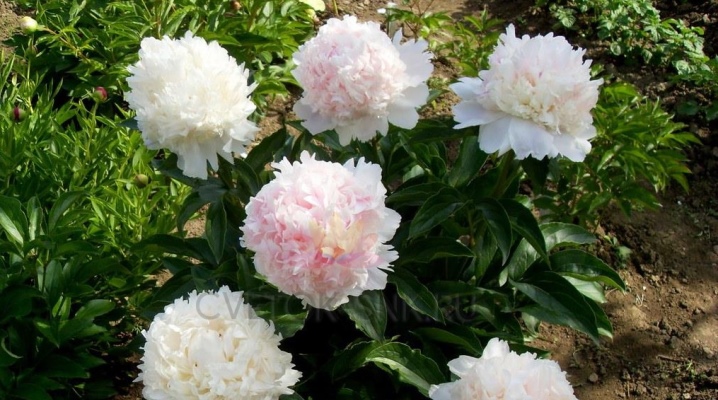
The "Mister Ed" variety is a unique variety of peonies that has two sides. On the same bush, soft pink and frosty white flowers can bloom at the same time. In addition, the flowers themselves can be two-colored: one part is pink, the other is white. The sight of the flowering peonies of this variety is very exciting.
The flower seems weightless - so delicate and airy are its petals with the most delicate color. Light aroma of peony "Mr. Ed" is pleasant and unobtrusive, does not cause headaches and allergic reactions. A bouquet of special flowers is a luxurious gift for a loved one or an unexpected attribute in an interior solution.
Description of the variety
The homeland of the plant is China. In the harsh Russian conditions, the variety has successfully adapted and does not cause trouble for gardeners.
The flower is intended for growing in the open field, it is able to perfectly resist diseases and pests.
A bush 90–100 centimeters high has a powerful rhizome, from which several strong stems originate. The leaves are openwork, they look very attractive outwardly, the color of the foliage varies from light to dark green shades. The flowers are large, can reach a diameter of 20 cm. The sprawling flower bush attracts the eye not only with the amazing beauty of the flowers, but also with bright saturated greenery.
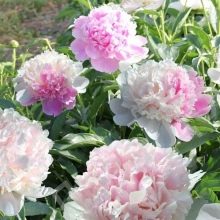
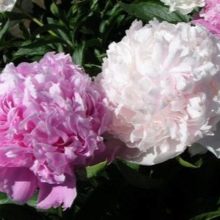
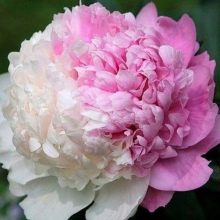
Landing
Peonies are perennial plants with a lifespan measured in decades. Flowers in the same place should be planted for no more than ten years, but you can change it more often. For planting, you should choose the sunniest area - the shade has a negative effect on growth and flowering.
The soil should be free from excess moisture, fertile or well fertilized. Before planting plants, be sure to add lime to the soil - it will increase fertility and reduce acidity.
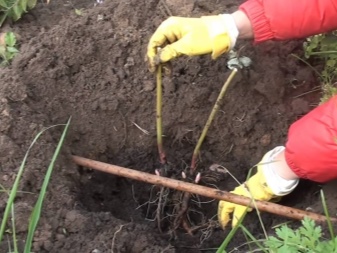

Peonies are planted in the fall - the roots should have time to get stronger before the first frost... It is not recommended to plant in the spring or summer months - a fragile rhizome does not tolerate heat well, the plant may die. A hole is dug under the root to a depth of at least 0.5 meters. The distance between plantings should be at least one meter so that the bushes are not crowded on the site. Immediately after planting in open ground, the plants are watered abundantly.

Care rules
After planting, for the first two years, the plant does not need feeding - the nutrients that were introduced during the preparation of the soil are enough. Peonies of the "Mr. Ed" variety live on average for a quarter of a century, but with proper care, their lifespan can reach a whole century.
Fertilizers - compost, ash, superphosphate and potassium substances - applied once a year in early spring. Bushes need in regular weedingso that weeds do not deprive them of good nutrition.
The variety is quite frost-hardy, so adult plants are able to endure winter without shelter. It is better to cover young bushes up to three years old - it will be calmer.
After the first frost, the foliage should be completely removed from the stems, which will further avoid fungal diseases. And for their prevention and treatment, copper sulfate is perfect.
It is not difficult to grow peonies, and the result usually exceeds the wildest expectations of the grower.
For the intricacies and features of caring for peonies, see the following video.
Briefly about diseases and methods of struggle
Of the diseases of peonies, fungal infections are the most common.
- Gray rot... This fungus, hibernating in the soil, manifests itself in the spring - it covers the lower parts of the plant stem in an unsightly brown ring. Copper preparations will help to save the plant.
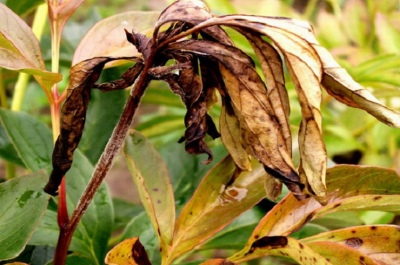
- Root rot. Reasons for infection: improper division of the bush during transplantation, high humidity or acidity of the soil. The method of struggle is to remove the affected area.
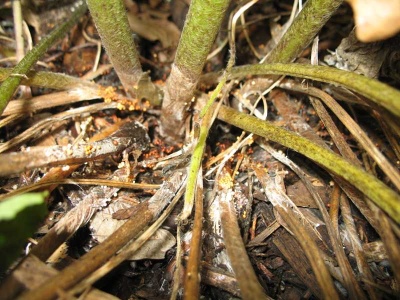
- Septoria. Brown spots on greenery that appear in mid-summer. The fungus is a pathogen resistant to cold climates. It can be destroyed with special drugs.
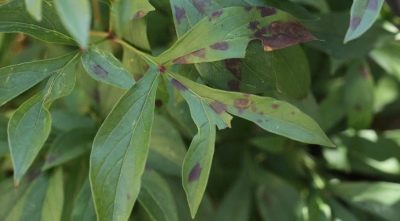







































































































The comment was sent successfully.